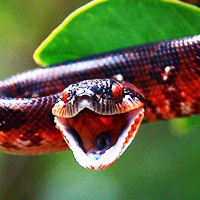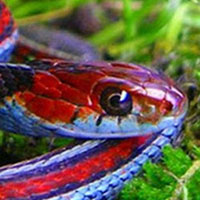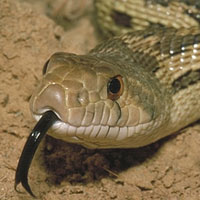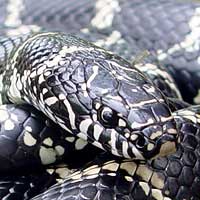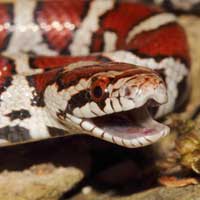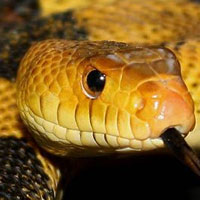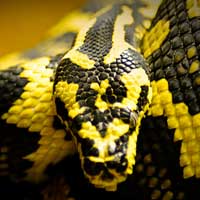A Complete Guide to the Fascinating Aesculapian Rat Snake
The Aesculapian Rat Snake, scientifically known as Zamenis longissimus, belongs to the Colubridae family, which is the largest family of snakes and includes non-venomous and mildly venomous species known for their adaptability and widespread distribution across various habitats.
Scientific Name: Zamenis longissimus
Snake Family: Colubridae
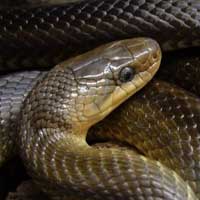
Discover the Unique Traits of the Aesculapian Rat Snake
The Aesculapian Rat Snake (*Zamenis longissimus*) is a non-venomous snake species renowned for its sleek appearance and adaptability. Native to Europe and parts of Asia, this snake is often found in wooded areas and near human settlements. With its golden-brown or olive-green coloration, the Aesculapian Rat Snake is both a remarkable predator and a captivating subject for herpetology enthusiasts.
Creating the Perfect Habitat for the Aesculapian Rat Snake
The Aesculapian Rat Snake thrives in diverse environments, from forests to open grasslands and even near urban areas. To replicate its natural habitat in captivity, follow these guidelines:
- Provide an enclosure size of at least 40 gallons for adults, with ample vertical space for climbing.
- Maintain a temperature gradient between 75-85°F during the day and 65-75°F at night.
- Humidity levels should range from 50-70%, achieved with misting and a water dish.
- Add naturalistic features like branches, hides, and substrate such as bark chips or soil.
Below is a quick reference for habitat setup:
| Habitat Element | Recommendation |
|---|---|
| Enclosure Size | 40+ gallons |
| Temperature | 75-85°F (day), 65-75°F (night) |
| Humidity | 50-70% |
| Substrate | Bark chips, soil, or similar materials |
Understanding the Aesculapian Rat Snake's Diet and Feeding Habits
As a carnivorous species, the Aesculapian Rat Snake primarily feeds on small mammals and birds in the wild. In captivity, their diet is straightforward to manage:
- Feed juveniles once every 5-7 days with pinky mice or small rodents.
- Feed adults once every 10-14 days with appropriately sized rodents.
- Always use pre-killed prey to prevent injuries.
- Provide a shallow water dish for hydration and occasional soaking.
Ensuring a consistent feeding schedule promotes optimal health and growth for your snake.
Exploring the Behavior and Temperament of the Aesculapian Rat Snake
The Aesculapian Rat Snake is known for its inquisitive and relatively calm demeanor, making it a popular choice among reptile keepers. Here are some notable traits:
- Active Climbers: These snakes enjoy climbing and will benefit from vertical structures in their enclosure.
- Day and Night Activity: They exhibit activity during both day and night, depending on environmental conditions.
- Docile Nature: With regular handling, they typically remain calm and manageable.
- Defensive Behavior: When threatened, they may hiss or strike, but this is uncommon in captive specimens.
Understanding their behavior helps create a comfortable environment and fosters a positive interaction experience.
Health and Lifespan of the Aesculapian Rat Snake
The Aesculapian Rat Snake can live up to 20 years in captivity when properly cared for. Maintaining their health involves these key aspects:
- Common Health Issues: Respiratory infections, dehydration, and scale rot are potential concerns.
- Preventative Measures: Keep the enclosure clean, maintain proper humidity, and provide a balanced diet.
- Veterinary Care: Annual check-ups with an exotic animal vet are advisable to catch and treat issues early.
With diligent care, these snakes can lead long and healthy lives.
Reproduction of the Aesculapian Rat Snake
Breeding Aesculapian Rat Snakes in captivity requires attention to their natural reproductive cycle. Key considerations include:
- Breeding Season: Typically occurs in spring, after a winter brumation period.
- Clutch Size: Females lay 6-10 eggs per clutch.
- Incubation: Eggs should be incubated at 80-85°F for 50-60 days.
Providing the right conditions can ensure successful breeding and healthy offspring.
Best Practices for Handling and Caring for the Aesculapian Rat Snake
Proper handling and care are essential for the well-being of your Aesculapian Rat Snake. Follow these tips:
- Handle the snake gently and support its body fully.
- Avoid handling during or immediately after feeding to prevent stress or regurgitation.
- Clean the enclosure regularly to maintain hygiene.
- Monitor the snake for signs of stress or illness, such as lethargy or lack of appetite.
- Provide regular enrichment through climbing opportunities and varied enclosure layouts.
Building trust through proper handling ensures a rewarding experience for both owner and snake.
Other Snakes In This Species
 Aesculapian Rat Snake
Aesculapian Rat Snake Amur Russian Rat Snake
Amur Russian Rat Snake Bairds Rat Snake
Bairds Rat Snake Black Rat Snake
Black Rat Snake Chinese Twin-spotted Rat Snake
Chinese Twin-spotted Rat Snake Diadem Rat Snake
Diadem Rat Snake Diones Rat Snake
Diones Rat Snake Eastern Fox Snake
Eastern Fox Snake Everglades Rat Snake
Everglades Rat Snake Four-lined Rat Snake
Four-lined Rat Snake Gray Rat Snake
Gray Rat Snake Great Plains Rat Snake
Great Plains Rat Snake Green Rat Snake
Green Rat Snake Ladder Rat Snake
Ladder Rat Snake Leopard Rat Snake
Leopard Rat Snake Mandarin Rat Snake
Mandarin Rat Snake Radiated Rat Snake
Radiated Rat Snake Steppes Rat Snake
Steppes Rat Snake Texas Rat Snake
Texas Rat Snake Trans-Pecos Rat Snake
Trans-Pecos Rat Snake Trinket Rat Snake
Trinket Rat Snake Yellow Rat Snake
Yellow Rat Snake
